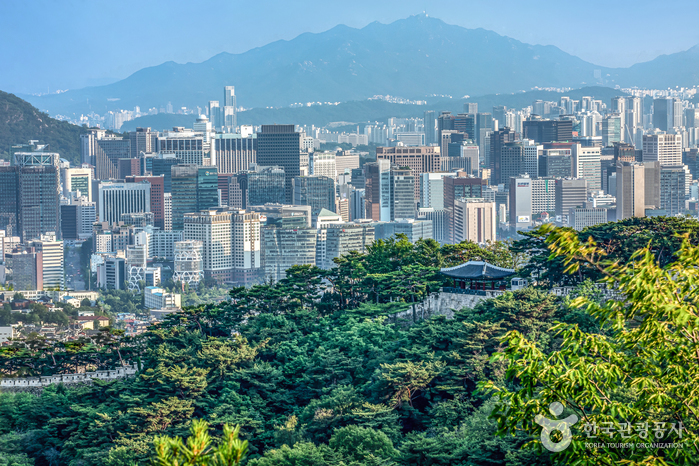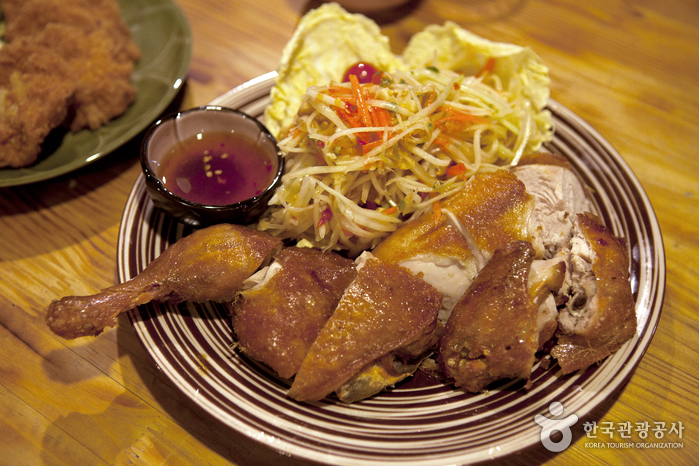Innisfree - Hongdae Branch (No. 3) [Tax Refund Shop] (이니스프리 홍대3호)
4.6Km 2024-04-17
1F, 12, Yanghwa-ro 18-gil, Mapo-gu, Seoul
-
Maria Fertility Hospital (마리아병원)
4.6Km 2025-10-23
20 Cheonho-daero, Dongdaemun-gu, Seoul
In 1967, Maria Obstetrics and Gynecology opened where the Maria Fertility Hospital (Sinseol-dong, Dongdaemun-gu, Seoul) sits today, leading to the creation of the Maria Medical Foundation. At the time, the doctor willingly visited patients' houses with an old house-call bag even in the early mornings, no matter where a patient lived. This founding spirit became the root of the hospital's principles and commitment to its services.
Maria Fertility Hospital ranks number one in in-vitro fertilization cases, accounting for approximately 30% of the total cases among fertility hospitals. The hospital opened branches so that patients can conveniently experience the medical know-how of Maria Fertility Hospital no matter where they live across the country. The branches provide optimum diagnosis of problems through close collaborations among the branches.
The hospital has become a globally renowned fertility center, going beyond its unrivaled number-one position in fertility medicine in Korea. The hospital is dedicated to finding the best solution through research, and helping infertile patients realize their dreams of having a baby to create a healthy and happy family.
Maria Fertility Hospital is moving forward with the philosophy and heritage it inherited from the Maria Medical Foundation.
Donsoobaek Hongdae (돈수백 홍대직영)
4.6Km 2024-03-19
74, 6-gil, Hongik-ro, Mapo-gu, Seoul
+82-2-324-3131
Located near Hongik Univ. Station, Donsoobaek specializes in dwaeji gukbap (pork and rice soup). Dwaeji gukbap is a dish originated in Busan, Gyeongnam Province, and is made with boiled pork in a broth made from pork bones. Their signature dish, Donsoobaek Set Menu, ise served with warm boiled pork slices and kimchi cabbage wraps with pork.
Bugak Skyway Palgakjeong Pavilion (북악스카이 팔각정)
4.6Km 2024-12-31
267 Bugaksan-ro, Jongno-gu, Seoul
Bugak Skyway Palgakjeong Pavilion exudes a tranquil, serene beauty regardless of the season. The pavilion, which sits on Bugaksan's 1,652,900 square meter summit at an altitude of 345 meters, was built in a traditional Korean-style and became a popular attraction within the city. There are also spaces for visitors to enjoy food and drinks.
Tuk Tuk Noodle Thai (툭툭누들타이)
4.7Km 2024-03-12
161-8, Seongmisan-ro, Mapo-gu, Seoul
+82-70-4407-5130
Tuk Tuk Noodle Thai was selected for the Michelin Guide Seoul 2023, and the chef is Thai. They offer signature dishes such as Fried soft shell crab with curry powder, Phat Thai, Tom Yam Kung, and galbi noodles, as well as seasonal dishes using various ingredients. Made with Thai ingredients, their dishes have unique Thai flavors. It is close to the Hongik Univ. Station, attracting numerous patrons.
Kakao Friends Flagship Store - Hongdae Branch [Tax Refund Shop] (카카오프렌즈 플래그십 홍대)
4.7Km 2024-04-18
B2-F3, 162, Yanghwa-ro, Mapo-gu, Seoul
-
Yeonnam-dong (연남동)
4.7Km 2024-03-19
Yeonnam-dong, Mapo-gu, Seoul
Yeonnam-dong, located near Hongik University Station, has become a hot spot in Seoul as young artists and hipsters gather. It is densely packed with art spaces, and every alley is filled with unique concept cafés and many restaurants. There are also many guesthouses, editorial shops, and fashion stores, along with Yeontral Park, which was transformed from the old Gyeongui Line railroad into a park.
Myth Jokbal Hongik Univ. (미쓰족발 홍대)
4.7Km 2024-03-19
123-1 Eoulmadang-ro Mapo-gu Seoul
+82-2-336-2111
Myth Jokbal is an affordable place for jokbal (braised pigs' feet) and bossam (kimchi cabbage wraps with pork). Jokbal is made by boiling pork feet for a long time and is characterized by its chewy texture and flavor. The signature dish, Myth maneul jokbal (braised pigs' feet with garlic), is tender and flavored with plenty of garlic. the restaurant offers other popular dishes including original jokbal (original braised pigs' feet), kkaennip buljokbal (spicy braised pigs' feet with perilla leaves), and gabeuri bossam (kimchi cabbage wraps with grilled blade-end fatback). It is just a 2-minute walk from Exit 9 of Hongik Univ. Station, attracting numerous visitors.
K-medi Spring (한강애봄)
4.7Km 2025-12-09
6th Floor, 63 Dongsomun-ro, Seongbuk-gu, Seoul
HanGang AeBom is a certified agency specializing in attracting international patients, offering customized programs that combine Korea’s advanced medical services with tourism. The agency collaborates with medical institutions to arrange consultations, interpretation, accommodation, and travel itineraries.
![Hongik Pharmacy [Tax Refund Shop] (홍익약국)](http://tong.visitkorea.or.kr/cms/resource/48/3312848_image2_1.jpg)
![Innisfree - Hongdae Branch (No. 3) [Tax Refund Shop] (이니스프리 홍대3호)](http://tong.visitkorea.or.kr/cms/resource/26/2888226_image2_1.jpg)



![Kakao Friends Flagship Store - Hongdae Branch [Tax Refund Shop] (카카오프렌즈 플래그십 홍대)](http://tong.visitkorea.or.kr/cms/resource/36/2878336_image2_1.jpg)
 English
English
 한국어
한국어 日本語
日本語 中文(简体)
中文(简体) Deutsch
Deutsch Français
Français Español
Español Русский
Русский